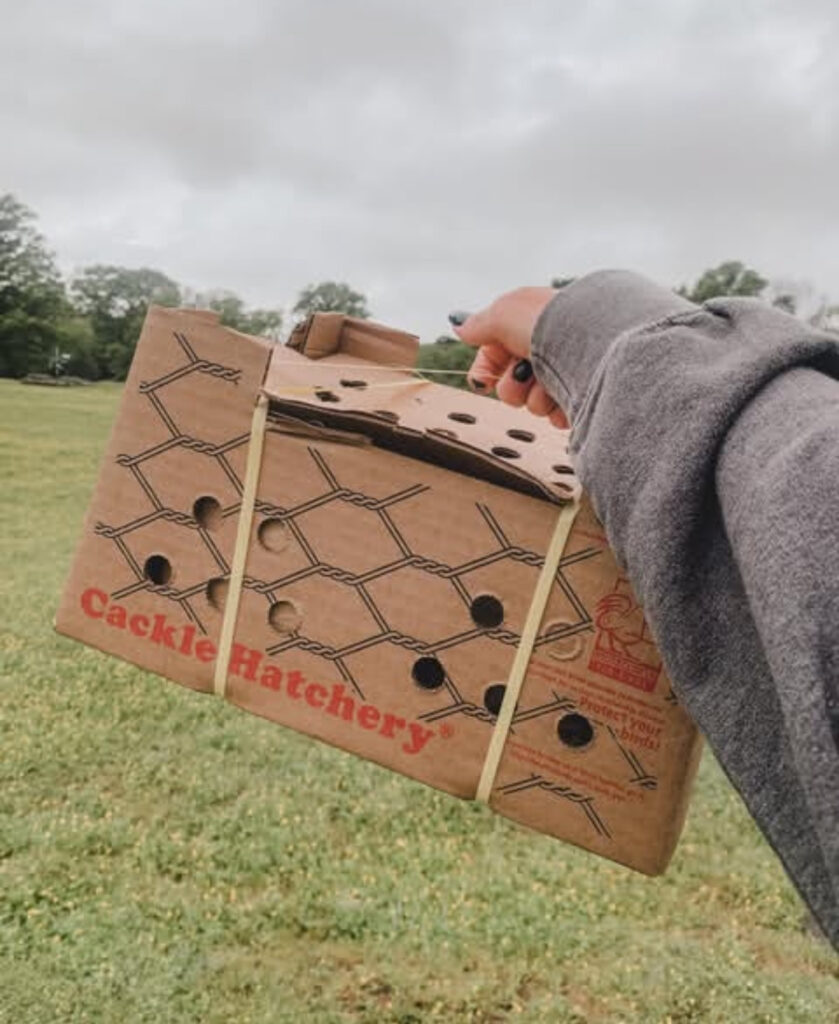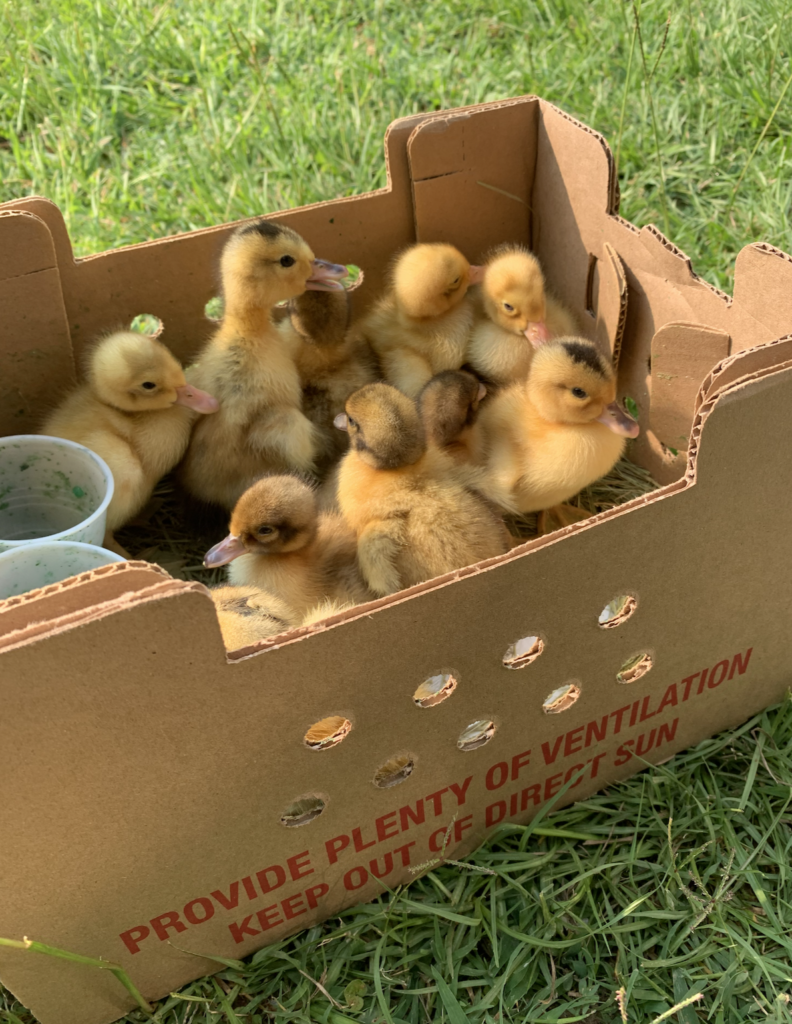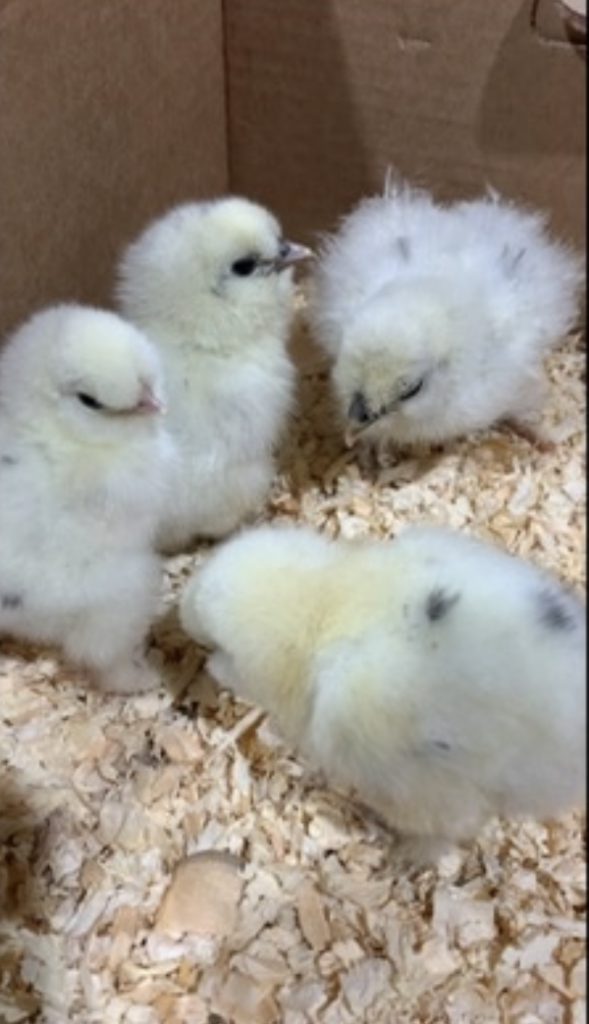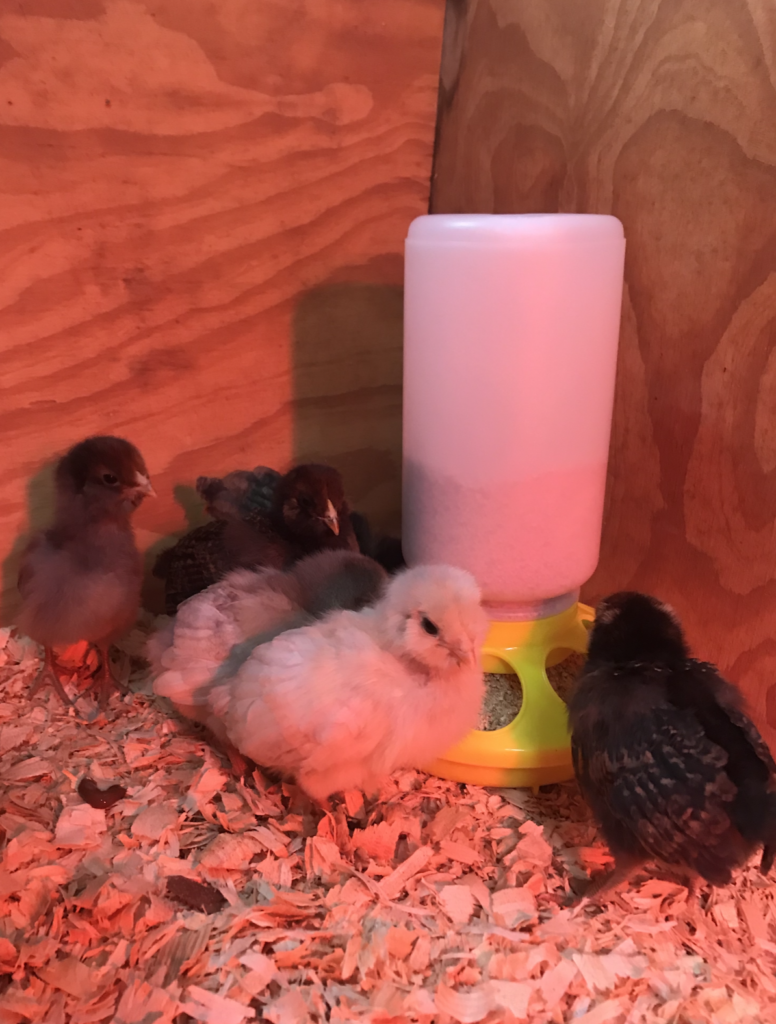
Ordering day-old baby chicks by mail is an exciting way to start your backyard flock! These tiny fluffballs are surprisingly resilient, but they need special care right out of the box to thrive. Here’s a simple guide to help you get them settled and healthy after their big journey.

Step 1: Set Up a Brooder Before They Arrive
A brooder is your chicks’ temporary home. Use a large cardboard box, plastic tub, or a dedicated brooder setup with these essentials:
- Heat Source: A heat lamp with a 250-watt red bulb works best. Hang it securely to keep the temperature at 95°F (35°C) at chick level for the first week.
- Bedding: Spread 1-2 inches of pine shavings (not cedar—it’s toxic) for comfort and absorbency.
- Food and Water: Have a chick-sized waterer and feeder ready with fresh water and chick starter feed (20-22% protein).
Step 2: Unbox Them Carefully
When your chicks arrive:
- Check each chick for signs of distress. Most will be fine—they survive shipping thanks to yolk reserves from hatching.
- Gently lift them out one by one and inspect them briefly.
Step 3: Warm Them Up
Shipping can chill chicks, so getting them warm is priority one:
- Place them under the heat lamp right away. Watch their behavior: if they huddle under the lamp, they’re cold; if they spread out to the edges, they’re too hot. Adjust the lamp height to keep them comfy.
- After a few hours, they should perk up and start exploring.

Step 4: Teach Them to Drink
Chicks might not know where to find water after their trip:
- Dip each chick’s beak gently into the waterer. Do this once or twice until they start drinking on their own.
- Add a teaspoon of sugar or electrolyte powder (like Sav-A-Chick) to their water for the first day to boost energy.
Step 5: Feed Them Right
Once they’re warm and hydrated, introduce food:
- Fill a shallow feeder with chick starter crumble. Sprinkle some on the brooder floor to encourage pecking—it mimics natural foraging.

Step 6: Monitor
For the first week, keep a close eye on them:
- Temperature: Drop the brooder temp by 5°F each week (to 90°F, then 85°F, etc.) until they’re fully feathered at 6-8 weeks.
- Cleanliness: Change wet or dirty bedding daily.
- Health: Look for bright eyes, active movement, and steady chirping. If a chick seems weak or has a pasty butt (poop stuck to its vent), clean it gently with warm water and a cloth.

Quick Tips
- Handle them gently but minimally—they’re fragile and stressed from travel.
- Expect some noise—chirping means they’re alive and chatting!
- Call the hatchery if any chicks arrive dead; most offer refunds or replacements.
COMMENTS